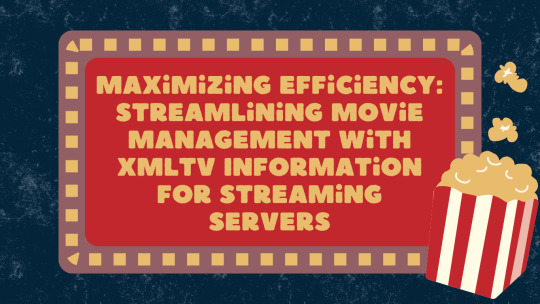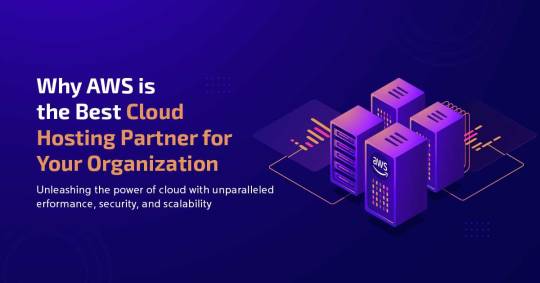#employee scalability
Explore tagged Tumblr posts
Text
Creating a Benefits Strategy with HRMS That’s Right for Your Organization
In today’s competitive job market, a well-crafted employee benefits strategy is essential for attracting and retaining top talent. With the help of a Human Resource Management System (HRMS), companies can develop a streamlined, effective, and customized benefits strategy that aligns with their organizational goals and meets employee needs. Here’s how to create a benefits strategy with HRMS that fits your organization perfectly.
1. Assess Your Organization’s Unique Needs
Before diving into HRMS features, start by identifying your organization’s specific needs and priorities. Consider factors such as workforce demographics, budget constraints, and industry standards. Are employees looking for more flexibility, wellness programs, or retirement options? Understanding these unique needs will guide your HRMS selection and help design a benefits strategy that resonates with your team.
2. Set Clear Objectives for Your Benefits Strategy
Determine what you aim to achieve with your benefits strategy. Are you focusing on improving employee retention, boosting engagement, or enhancing work-life balance? Having clear goals will shape your approach to benefits and allow you to track the strategy’s effectiveness over time. An HRMS can then be configured to support these objectives, offering tools and data insights to measure and refine your strategy.
3. Choose the Right HRMS Features for Benefits Management
Selecting an HRMS that aligns with your objectives and offers relevant features is crucial. Look for HRMS platforms that provide:
Self-service portals for employee access
Automation for enrollment and tracking
Reporting tools for real-time insights
Integration options with other HR systems
Choosing a system with the right features will enable you to administer benefits effectively and offer a user-friendly experience for employees.
4. Personalize Benefits to Meet Diverse Employee Needs
Today’s workforce is more diverse than ever, with employees spanning multiple generations and backgrounds. An HRMS allows you to create flexible, personalized benefits packages that appeal to a wide range of preferences. Use HRMS data to understand which benefits employees value most and tailor your offerings accordingly. Personalizing benefits can boost employee satisfaction and make your organization more attractive to potential hires.
5. Automate Routine Tasks to Improve Efficiency
One of the biggest advantages of using an HRMS for benefits management is automation. Routine tasks, like benefits enrollment, eligibility tracking, and reminders, can be automated, freeing up your HR team’s time for strategic planning. Automation minimizes the chances of errors, ensures timely benefits administration, and keeps employees informed about their options.
6. Focus on Compliance and Security
Employee benefits data involves sensitive information, so compliance and data security are critical. A reliable HRMS ensures data is stored securely and complies with legal requirements. Look for an HRMS that offers regular compliance updates and secure access controls. This reduces risks for your organization and gives employees peace of mind about their personal information.
7. Leverage Data Insights to Optimize Your Strategy
An HRMS can generate detailed reports on benefits enrollment, usage trends, and employee satisfaction. Use these insights to evaluate the success of your current benefits offerings and identify areas for improvement. For example, if data shows that a particular wellness program has low participation, you might consider enhancing its accessibility or replacing it with a more popular option.
8. Offer Self-Service Options for Greater Employee Control
Self-service HRMS portals allow employees to view, manage, and update their benefits at their convenience. This empowers employees and reduces the administrative burden on HR. By giving employees more control, you can foster a positive workplace culture where employees feel supported and in charge of their own benefits.
9. Provide Real-Time Communication and Updates
Keeping employees informed about their benefits options, deadlines, and any upcoming changes is essential for engagement. An HRMS with built-in communication tools can help HR teams send reminders, updates, and resources to employees in real-time. This level of communication enhances transparency and ensures employees are always up-to-date on their benefits.
10. Incorporate Employee Feedback to Refine Benefits Offerings
Gathering feedback from employees about the benefits they use and value most can help refine your benefits strategy. Many HRMS platforms have survey and feedback features that make it easy to collect employee opinions. Use this feedback to adjust your offerings, introduce new benefits, or modify existing ones to better suit your team’s needs.
11. Monitor and Adjust the Strategy Over Time
A benefits strategy is not a one-time effort; it requires ongoing monitoring and refinement. Use your HRMS to track key metrics, such as employee satisfaction and retention rates, to gauge the impact of your benefits strategy. Adjustments can be made based on feedback and data insights to ensure the strategy remains relevant and effective as organizational needs evolve.
12. Plan for Scalability as Your Organization Grows
As your organization expands, so too will your benefits administration needs. A scalable HRMS ensures you can adapt benefits offerings to meet the demands of a growing workforce without overwhelming HR resources. Consider an HRMS that can accommodate additional employees, benefits programs, and more complex administrative processes as your company grows.
Conclusion
Creating a benefits strategy with an HRMS is a powerful way to align organizational goals with employee expectations. By assessing your unique needs, automating tasks, leveraging data insights, and providing self-service options, you can design a benefits strategy that not only simplifies administration but also enhances employee satisfaction.
With the right HRMS and a flexible, evolving approach, your organization can deliver benefits that are meaningful, impactful, and supportive of a thriving workplace.
#fair compensation#hrms benefits#hrms software#employee scalability#employee expectations#employee engagement#employee retention#employee development#employee benefits
0 notes
Text
#HR partner#Human resources outsourcing#HR services for small businesses#Finding an HR consultant#HR management solutions#Employee compliance#Recruitment strategies#Talent management#Employment laws and regulations#Workplace culture improvement#Employee relations management#HR technology tools#HR scalability for business growth#Hiring and onboarding solutions#Bambee HR services#Affordable HR solutions#Dedicated HR manager#Small business HR compliance#HR software integration#HR best practices for business#HR outsourcing
0 notes
Text
Online Training: Corporate Innovations

In today's fast-paced corporate world, online training has emerged as a cornerstone for continual professional development and organizational growth. This modality not only accommodates the dynamic needs of global enterprises but also aligns with the evolving expectations of a modern workforce. The significance of online training in fostering an environment of continuous learning and adaptation cannot be overstated, serving as a catalyst for both individual and corporate success.
Background Information: Tracing the Trajectory of Online Learning
Initially, corporate training was predominantly conducted in traditional classroom settings, often limiting due to logistical constraints and fixed schedules. Through time, advancements in technology and the advent of the internet transformed how organizations approach training and development. At present, online training platforms offer unparalleled flexibility and accessibility, enabling employees across different geographies to upgrade their skills at their convenience.
Significance of Online Training
Moreover, online training plays a pivotal role in enhancing employee engagement and productivity. Organizations that leverage these platforms report higher levels of employee satisfaction and lower turnover rates. Additionally, online training methods are highly scalable, allowing companies to efficiently train large numbers of employees with consistent quality and lower costs.
Key Elements of Online Training
Personalization and Adaptability: First off, online training offers personalized learning experiences that cater to the individual preferences and learning speeds of employees.
Accessibility and Convenience: Subsequently, the convenience of accessing training sessions from anywhere at any time ensures that employees can learn without disrupting their work-life balance.
Advanced Technologies: Following this, the integration of cutting-edge technologies like AI and VR into online training enhances the learning experience, making it more interactive and engaging.
Challenges and Myths of Online Training
Despite the advantages, online training faces certain challenges and misconceptions. One common myth is that online training is less effective than traditional face-to-face learning. Nevertheless, studies show that when executed well, online training can match, and sometimes, surpass the effectiveness of in-person training sessions.
Best Practices for Effective Online Training
To navigate these challenges, it is recommended to:
Incorporate Engaging Content: Design courses that are visually engaging and interactive to maintain the learners' interest.
Utilize Feedback for Improvement: Regularly gather and incorporate feedback to continuously improve the training programs.
Offer Continuous Support: Provide ongoing support and resources to assist learners throughout their training journey.
Emerging Trends in Online Training
Looking forward, the field of online training is poised for further innovations. In the coming years, augmented reality (AR) and artificial intelligence (AI) are expected to play a more significant role in creating immersive and personalized learning experiences.
Conclusion
Online training continues to redefine professional development and employee engagement in the corporate world. By embracing the elements, addressing the challenges, and employing best practices discussed, organizations can significantly enhance their training outcomes. Strengthscape’s tailored online training solutions empower businesses to unlock their workforce's potential and achieve competitive advantages in their respective industries.
#corporate training efficiency#employee engagement innovations#scalable learning solutions#technology in training#personalized learning experiences
0 notes
Text
Benefits of Implementing Enterprise Mobility Solutions in Your Business
In today's fast-paced business environment, staying competitive and efficient is crucial. One way to achieve this is by implementing Enterprise Mobility Solutions (EMS) in your organization. EMS refers to the use of mobile technology to streamline business processes, improve productivity, and enhance communication. In this blog, we will explore the numerous benefits that come with integrating Enterprise Mobility Solutions into your business operations.
Key Benefits of Enterprise Mobility Solutions
1. Enhanced Productivity
Enterprise Mobility Solutions enable your employees to work from anywhere at any time. This flexibility leads to increased productivity as tasks can be completed on the go. Whether it's responding to emails, accessing critical data, or collaborating with team members, mobile solutions ensure that your workforce remains productive even outside the office.
2. Improved Communication
Effective communication is the cornerstone of any successful business. With EMS, your team can stay connected and collaborate seamlessly. Features such as instant messaging, video conferencing, and mobile apps enable real-time communication, breaking down barriers and improving decision-making.
3. Cost Savings
By leveraging mobile devices and applications, your business can significantly reduce costs. EMS allows for remote work, reducing the need for a centralized office space. Additionally, mobile apps can streamline various processes, leading to operational cost savings. Less paper, lower utility bills, and reduced travel expenses are just a few of the ways EMS can positively impact your bottom line.
4. Enhanced Customer Experience
Enterprise Mobility Solutions can also benefit your customers. With mobile apps, they can easily access your products or services, place orders, and receive support, all from the convenience of their smartphones or tablets. This leads to improved customer satisfaction and loyalty.
5. Data Security
Data security is a top concern for any business. Enterprise Mobility Solutions provide robust security features to protect sensitive information. These solutions often include encryption, secure access controls, and remote data wipe capabilities, ensuring that your data remains safe even on mobile devices.
6. Competitive Advantage
In today's competitive landscape, staying ahead of the curve is essential. By embracing Enterprise Mobility Solutions, your business can gain a competitive edge. With the ability to adapt quickly to market changes and customer demands, you can outperform competitors who are slower to adopt mobile technologies.
7. Scalability
As your business grows, so do your needs. Enterprise Mobility Solutions are scalable, allowing you to expand and customize your mobile infrastructure as your organization evolves. This flexibility ensures that your technology can grow with your business.
8. Real-time Access to Data
Access to real-time data is critical for decision-making. With EMS, your team can access up-to-the-minute information, enabling them to make informed decisions promptly. This real-time access to data can significantly impact your business's efficiency and strategic planning.
9. Regulatory Compliance
Many industries have strict regulatory requirements for data handling and security. Enterprise Mobility Solutions often come equipped with compliance features to help your business meet these obligations, reducing the risk of penalties and legal issues.
10. Employee Satisfaction
Happy employees are more engaged and productive. The flexibility and convenience that EMS offers can improve employee satisfaction, leading to lower turnover rates and a more motivated workforce.
In conclusion, implementing Enterprise Mobility Solutions in your business can bring about a myriad of benefits, from improved productivity and communication to cost savings and enhanced customer experiences. To stay competitive and adaptable in today's digital age, consider integrating EMS into your organization's strategy. If you want to unlock the full potential of your business, "Enterprise Mobility Solutions" are a must-have.
#Enterprise Mobility Solutions#Mobile Productivity#Mobile Communication#Cost Savings#Customer Experience#Data Security#Competitive Advantage#Scalability#Real-time Data Access#Regulatory Compliance#Employee Satisfaction#Business Efficiency#Mobile Workforce#Mobile Apps#Remote Work#Mobile Technology#Digital Transformation#Business Mobility#Mobile Strategy#Workplace Flexibility
0 notes
Text
PROFESSIONAL GRAPHIC DESIGN SERVICES
Elevate your brand's visual identity with my expert graphic design solutions! As a seasoned designer, I specialize in crafting:
1. LOGOS : Unique, memorable, and scalable logos that embody your brand's essence.
2. BUSINESS CARDS: Eye-catching, professional cards that make a lasting impression.
3. FLYERS: Compelling, informative flyers that drive attention and conversions.
4. BANNERS: Impactful, visually stunning banners for events, promotions, or advertising.
5. BUSINESS STICKERS: Custom stickers for branding, packaging, or promotional purposes.
6. EMBROIDERED SHIRTS & HATS: Branded apparel for employees, events, or marketing initiatives.
WHY CHOOSE ME?
1. EXPERTISE: Years of experience in graphic design, ensuring high-quality outputs.
2. CREATIVITY: Innovative, out-of-the-box designs that capture your brand's spirit.
3. ATTENTION TO DETAIL: Meticulous attention to ensure precision and accuracy.
4. TIMELY DELIVERY: Quick turnaround times to meet your deadlines.
5. COMPETITIVE PRICING: Affordable rates without compromising on quality.
6. PERSONALIZED SERVICE: Direct communication, ensuring your vision is brought to life.
BENEFITS OF PARTNERING WITH ME
1. ESTABLISH A STRONG BRAND IDENTITY: Consistent, professional visuals that build trust.
2. STAND OUT FROM THE COMPETITION: Unique designs that differentiate your business.
3. INCREASE BRAND RECOGNITION: Memorable logos and materials that resonate with your audience.
4. ENHANCE CREDIBILITY: Professional designs that convey expertise and reliability.
5. BOOST MARKETING EFFORTS: Effective visual materials that drive engagement and conversions.
GET STARTED TODAY!
Ready to elevate your brand's visual presence? Message me to discuss your design needs and let's create stunning visuals that drive success.
LET'S BRING YOUR BRAND TO LIFE!






#business growth#construction#lawnmower#lawn & garden#lawn care#united states#united kingdom#australia#canada#flooring
6 notes
·
View notes
Text

Effective XMLTV EPG Solutions for VR & CGI Use
Effective XMLTV EPG Guide Solutions and Techniques for VR and CGI Adoption. In today’s fast-paced digital landscape, effective xml data epg guide solutions are essential for enhancing user experiences in virtual reality (VR) and computer-generated imagery (CGI).
Understanding how to implement these solutions not only improves content delivery but also boosts viewer engagement.
This post will explore practical techniques and strategies to optimize XMLTV EPG guides, making them more compatible with VR and CGI technologies.
Proven XMLTV EPG Strategies for VR and CGI Success
Several other organizations have successfully integrated VR CGI into their training and operational processes.
For example, Vodafone has recreated their UK Pavilion in VR to enhance employee training on presentation skills, complete with AI-powered feedback and progress tracking.
Similarly, Johnson & Johnson has developed VR simulations for training surgeons on complex medical procedures, significantly improving learning outcomes compared to traditional methods. These instances highlight the scalability and effectiveness of VR CGI in creating detailed, interactive training environments across different industries.
Challenges and Solutions in Adopting VR CGI Technology
Adopting Virtual Reality (VR) and Computer-Generated Imagery (CGI) technologies presents a set of unique challenges that can impede their integration into XMLTV technology blogs.
One of the primary barriers is the significant upfront cost associated with 3D content creation. Capturing real-world objects and converting them into detailed 3D models requires substantial investment, which can be prohibitive for many content creators.
Additionally, the complexity of developing VR and AR software involves specialized skills and resources, further escalating the costs and complicating the deployment process.
Hardware Dependencies and User Experience Issues
Most AR/VR experiences hinge heavily on the capabilities of the hardware used. Current devices often have a limited field of view, typically around 90 degrees, which can detract from the immersive experience that is central to VR's appeal.
Moreover, these devices, including the most popular VR headsets, are frequently tethered, restricting user movement and impacting the natural flow of interaction.
Usability issues such as bulky, uncomfortable headsets and the high-power consumption of AR/VR devices add layers of complexity to user adoption.
For many first-time users, the initial experience can be daunting, with motion sickness and headaches being common complaints. These factors collectively pose significant hurdles to the widespread acceptance and enjoyment of VR and AR technologies.

Solutions and Forward-Looking Strategies
Despite these hurdles, there are effective solutions and techniques for overcoming many of the barriers to VR and CGI adoption.
Companies such as VPL Research is one of the first pioneer in the creation of developed and sold virtual reality products.
For example, improving the design and aesthetics of VR technology may boost their attractiveness and comfort, increasing user engagement.
Furthermore, technological developments are likely to cut costs over time, making VR and AR more accessible.
Strategic relationships with tech titans like Apple, Google, Facebook, and Microsoft, which are always inventing in AR, can help to improve xmltv guide epg for iptv blog experiences.
Virtual Reality (VR) and Computer-Generated Imagery (CGI) hold incredible potential for various industries, but many face challenges in adopting these technologies.
Understanding the effective solutions and techniques for overcoming barriers to VR and CGI adoption is crucial for companies looking to innovate.
Practical Tips for Content Creators
To optimize the integration of VR and CGI technologies in xmltv epg blogs, content creators should consider the following practical tips:
Performance Analysis
Profiling Tools: Utilize tools like Unity Editor's Profiler and Oculus' Performance Head Hub Display to monitor VR application performance. These tools help in identifying and addressing performance bottlenecks.
Custom FPS Scripts: Implement custom scripts to track frames per second in real-time, allowing for immediate adjustments and optimization.
Optimization Techniques
3D Model Optimization: Reduce the triangle count and use similar materials across models to decrease rendering time.
Lighting and Shadows: Convert real-time lights to baked or mixed and utilize Reflection and Light Probes to enhance visual quality without compromising performance.
Camera Settings: Optimize camera settings by adjusting the far plane distance and enabling features like Frustum and Occlusion Culling.
Building and Testing
Platform-Specific Builds: Ensure that the VR application is built and tested on intended platforms, such as desktop or Android, to guarantee optimal performance across different devices.
Iterative Testing: Regularly test new builds to identify any issues early in the development process, allowing for smoother final deployments.
By adhering to these guidelines, creators can enhance the immersive experience of their XMLTV blogs, making them more engaging and effective in delivering content.
Want to learn more? You can hop over to this website to have a clear insights into how to elevate your multimedia projects and provide seamless access to EPG channels.
youtube
7 notes
·
View notes
Text
Top AI Tools Transforming Business in 2024

The Top AI Tools That Are Changing How We Do Business in 2024
AI Tools is no longer some sci-fi fantasy—it’s here, it’s real, and it’s changing everything about how we do business. In 2024, AI is a game-changer that smart businesses can’t afford to ignore. Whether it's about speeding up your day-to-day tasks, getting a better understanding of your customers, or staying ahead of the competition, AI is where it’s at. So, let’s break down the tools that are making waves this year.
Wanna know More About Digital Marketing
Why AI Matters More Than Ever for Businesses
AI is like having a superpower for your business—it takes data and turns it into insights, handles tasks automatically, and even gives each customer a personal touch without you lifting a finger. We’re in a time where data drives everything, and AI is the secret sauce that makes sense of it all. It’s what helps you make smarter decisions, faster, and that’s a huge win for any business looking to grow
Why AI is Essential for Modern Business
Simply put: AI makes things better. Faster responses to customers? Check. Instant insights into market trends? Done. Predicting when your equipment is about to break down? No problem. In 2024, companies of all sizes are turning to AI to keep up and stand out
The AI Tools You Should Know About in 2024
A. AI for Data Analysis: Power BI and Tableau
Data is everywhere, but making sense of it can be a headache. Thankfully, tools like Power BI and Tableau take the guesswork out of it.
B. AI for Customer Service: ChatGPT and Zendesk AI
AI is reshaping customer service, making sure your clients get what they need when they need it.
C. Marketing Tools: HubSpot and Persado
Marketing is all about making a connection, and AI tools like HubSpot and Persado are all about making those connections count.
D. Sales Automation: Salesforce Einstein and Drift
For sales teams, AI tools are like having an extra set of hands (or several!) to take care of the heavy lifting.
E. Content Creation Made Easy: Jasper AI and Grammarly Business
Keeping up with content demands can feel like a full-time job, but AI tools are here to help you get ahead.
F. Smarter HR Tools: Workday AI and Pymetrics
HR can be a challenge, but AI tools are taking a lot of the stress out of hiring and employee management.
G. Finance Tools: IBM Watson and Xero AI
In finance, AI is making everything from accounting to forecasting easier.
H. Keeping Equipment Running: GE Predix and Uptake
In industries that rely on equipment, AI tools are the unsung heroes preventing breakdowns before they happen.
I. Staying Safe Online: Darktrace and Cylance
Cybersecurity threats aren’t going away, so AI tools like Darktrace and Cylance are stepping up to protect your business.
How AI is Boosting Business Efficiency and Driving Innovation
AI tools are helping companies work smarter, not harder. By handling the repetitive stuff, AI frees up your team to think bigger and focus on projects that really make a difference. It’s not just about cutting costs; it’s about giving your busi
The Best AI Has to Offer
Scalability: Grow faster without losing quality or breaking the bank.
Smarter Decisions: AI turns raw data into insights that help you make choices with confidence.
Better Customer Interactions: Personalized service that feels truly personal.
Cost Savings: No more wasting time on boring, repetitive tasks.
Productivity Boost: Your team can spend time on strategy instead of busywork.
The Challenges of Adopting AI in 2024
Of course, AI isn’t a magic wand. It comes with its own set of hurdles—like finding the right talent, protecting privacy, and getting the tech to play nice with what you already have. But if you tackle these challenges head-on, the rewards are worth it.
Bridging the Skills Gap
AI expertise is in demand, and training your team or bringing in specialists can make all the difference.
Keeping Data Safe
Data is the fuel that powers AI, so keeping it secure and compliant with regulations is a top priority.
What’s Next for AI in Business?
AI isn’t slowing down. In the coming years, we’ll see more focus on ethical AI, advancements in autonomous tech, and hyper-personalization in every industry.
Ethical AI
AI is getting fairer and more transparent, with companies pushing to remove biases and increase accountability.
Autonomous AI
From self-driving cars to smart warehouses, autonomous AI is about to change how we move, ship, and manufacture.
Super-Personalized Experiences
AI will get better at understanding what customers want before they even know they want it.
Final Thoughts: Make AI Work for You
In 2024, AI is a no-brainer. It’s time to embrace it, use it to streamline your processes, and start delivering experiences your customers will love. AI is here to make your business smarter, faster, and more adaptable—and if you’re ready to lean in, the future looks bright.
4 notes
·
View notes
Text
The Future of Customer Service with Chatbot Builder
In today's fast-paced digital world, customer service is rapidly transforming. Thanks to advancements in artificial intelligence and automation, businesses are finding innovative ways to improve user experiences. Chatbot builders are leading this charge, becoming essential tools for organizations looking to enhance their customer interactions. With the ability to mimic conversation and deliver instant support, chatbots are reshaping customer service across different sectors.
Understanding Chatbot Builders
Chatbot builders are user-friendly platforms that allow anyone to create and launch chatbots without needing extensive coding skills. Equipped with intuitive interfaces, these tools let businesses customize their chatbots to meet specific customer needs. The rise of chatbot technology can be linked to its ability to reduce costs, provide 24/7 support, and manage a large number of inquiries at once.
For example, companies that implement chatbots can automate responses to frequently asked questions (FAQs), leading to efficiency gains. Statistics show that businesses using chatbots can handle up to 80% of routine inquiries, allowing human teams to focus on more complex tasks.
Enhancing Customer Experience
Providing timely and relevant answers is the heart of effective customer service. Chatbots excel here, quickly addressing frequent inquiries, offering product suggestions, and even assisting with bookings and purchases. This level of support improves the overall customer experience and lightens the workload for human agents.
For instance, a leading e-commerce site implemented a chatbot that reduced response times by over 40%. The bot could manage routine interactions, allowing customer service reps to devote their time to complex issues, which boosted employee satisfaction rates by 20%.
Additionally, chatbots can gather user data and analyze interactions, leading to ongoing enhancements in response quality. This capability allows businesses to adapt their customer service strategies based on real-time feedback, creating a more tailored experience for users.
Cost-Effectiveness and Efficiency
Adopting a chatbot can drastically lower operational costs. Businesses that automate common inquiries can redirect their human resources to tackle more intricate and sensitive customer issues. This not only enhances efficiency but also allows employees to engage in tasks that add significant value to the organization.
Moreover, chatbots have no limitations when it comes to working hours. They can provide support 24 hours a day, 7 days a week, ensuring customers receive timely assistance. A survey revealed that customer satisfaction rates increased by 30% when businesses adopted a chatbot for immediate responses.

Scalability and Flexibility
As businesses grow, the influx of customer inquiries does too. Chatbot builders provide scalable solutions that can adapt to evolving needs. Companies that see spikes in traffic, such as during holiday seasons, can rely on chatbots to handle a significant volume of queries without sacrificing response time or quality.
Additionally, many chatbot platforms integrate effortlessly with existing business tools. This integration allows companies to manage customer interactions through a centralized system, enhancing communication. For example, linking chatbot builders with Customer Relationship Management (CRM) systems can ensure all customer interactions are tracked, leading to better insights and strategies. Studies indicate that businesses with integrated systems see a 25% increase in operational productivity.
Leveraging AI and Machine Learning
Unlike traditional chatbot systems that follow fixed scripts, modern chatbot builders harness artificial intelligence (AI) and machine learning. This technology enables chatbots to learn from interactions, continuously improving their responses. With natural language processing capabilities, these chatbots can pick up context and sentiment, making conversations feel more engaging and human-like.
The expansion of chatbot capabilities also means they can tackle more complex tasks. It's no longer just about answering basic questions; chatbots can offer product recommendations, troubleshoot issues, and facilitate simple transactions. This evolution has opened new pathways for businesses to boost customer engagement. Reports suggest that companies using AI-enhanced chatbots see a 20% increase in customer retention rates.
Challenges and Considerations
Despite the clear advantages, businesses face challenges in effectively implementing chatbot builders. One critical concern is ensuring that the chatbot reflects the company's brand voice and provides consistent experiences at all customer touchpoints. While chatbots are great at handling numerous queries, some situations still need human touch.
To overcome these hurdles, companies should equip their chatbots with clear pathways to escalate issues to live agents when necessary. This setup guarantees customers receive the support they need when the bot can't resolve their issue. Regular updates to the chatbot's knowledge base are essential to keep it relevant and accurate.

The Path Forward
The evolution of customer service is closely linked to the rise of chatbot technology. With the support of chatbot builders, businesses can create efficient, scalable, and cost-effective support systems that cater to their customers' needs. As these bots become more advanced, their influence on customer service will only strengthen.
For companies aiming to improve their customer service strategies, embracing chatbot builders can be transformative. They deliver instant responses while freeing up human resources for more complex tasks. With customer expectations on the rise, integrating chatbot technology will be vital for achieving outstanding satisfaction and loyalty.
Adopting this technological shift is about more than just keeping pace. It’s an opportunity to lead in an increasingly competitive market. Taking the first step into chatbot technology today could lay the groundwork for exceptional customer service in the future.
3 notes
·
View notes
Text
Steps to Optimize IT Services for Your Small Business
Evaluate Your IT Setup: Identify outdated systems and inefficiencies.
Strengthen Cybersecurity: Use firewalls, antivirus software, and training.
Adopt Cloud Solutions: Improve collaboration and scalability.
Upgrade Communication: Implement VoIP for cost-effective features.
Use Network Monitoring: Prevent downtime and maintain performance.
Automate Tasks: Save time with automated backups and updates.
Invest in Scalability: Choose IT solutions that grow with your business.
Monitor Regularly: Track system performance and user satisfaction.
Train Employees: Ensure effective use of IT tools.
Work with Experts: Partner with a trusted IT provider for support.
Looking for IT services for small business or small business IT support services? EllimanTech offers reliable IT services and support tailored to your needs. Visit EllimanTech today to elevate your business!
#it services for small business#it support services#it services and support#it managed service provider
2 notes
·
View notes
Text
How to Choose the Best ERP for Engineering and Manufacturing Industry
In today’s fast-paced world, engineering and manufacturing companies face increasing pressure to deliver high-quality products while maintaining efficiency and cost-effectiveness. Implementing the right Enterprise Resource Planning (ERP) software can significantly enhance operations, streamline workflows, and boost productivity. However, with numerous options available, selecting the best ERP software for the engineering and manufacturing industry can be challenging. This guide will help you navigate this decision-making process and choose the most suitable solution for your business.

Why ERP is Crucial for Engineering and Manufacturing
ERP software integrates various business processes, including production, inventory management, supply chain, finance, and human resources. For engineering and manufacturing companies, ERP solutions are particularly vital because they:
Facilitate real-time data sharing across departments.
Enhance supply chain management.
Optimize production planning and scheduling.
Ensure compliance with industry standards.
Reduce operational costs.
Partnering with the right Engineering ERP software company ensures that your organization leverages these benefits to stay competitive in a dynamic market.
Steps to Choose the Best ERP for Engineering and Manufacturing
1. Understand Your Business Needs
Before exploring ERP solutions, evaluate your company’s specific requirements. Identify the pain points in your current processes and prioritize the features you need in an ERP system. Common features for engineering and manufacturing companies include:
Bill of Materials (BOM) management
Production planning and scheduling
Inventory control
Quality management
Financial reporting
Consulting with a reputed ERP software company can help you match your needs with the right features.
2. Look for Industry-Specific Solutions
Generic ERP software might not address the unique needs of the engineering and manufacturing sector. Opt for an ERP software in India that offers modules tailored to your industry. Such solutions are designed to handle specific challenges like multi-level BOM, project costing, and shop floor management.
3. Check Vendor Expertise
Choosing a reliable vendor is as important as selecting the software itself. Research ERP solution providers with a strong track record in serving engineering and manufacturing companies. Look for reviews, case studies, and client testimonials to gauge their expertise.
4. Evaluate Scalability and Flexibility
Your business will grow, and so will your operational requirements. Ensure that the ERP system you choose is scalable and flexible enough to accommodate future needs. The top 10 ERP software providers in India offer scalable solutions that can adapt to changing business demands.
5. Assess Integration Capabilities
An ERP system must integrate seamlessly with your existing tools, such as Computer-Aided Design (CAD) software, Customer Relationship Management (CRM) systems, and IoT devices. A well-integrated system reduces redundancies and enhances efficiency.
6. Prioritize User-Friendliness
A complex system with a steep learning curve can hinder adoption. Choose an ERP software with an intuitive interface and easy navigation. This ensures that your employees can use the system effectively without extensive training.
7. Consider Customization Options
No two businesses are alike. While standard ERP solutions offer core functionalities, some companies require customization to align with specific workflows. A trusted ERP software company in India can provide custom modules tailored to your unique needs.
8. Focus on Data Security
Engineering and manufacturing companies often deal with sensitive data. Ensure that the ERP solution complies with the latest security standards and offers robust data protection features.
9. Compare Pricing and ROI
While cost is an important factor, it should not be the sole criterion. Evaluate the long-term return on investment (ROI) offered by different ERP software. A slightly expensive but feature-rich solution from the best ERP software provider in India may deliver better value than a cheaper alternative with limited functionalities.
10. Test Before You Commit
Most ERP software companies offer free trials or demo versions. Use these opportunities to test the software in a real-world scenario. Gather feedback from your team and ensure the solution meets your expectations before finalizing your decision.
Benefits of Partnering with the Best ERP Software Providers in India
India is home to some of the leading ERP software providers in India, offering state-of-the-art solutions for the engineering and manufacturing sector. Partnering with a reputable provider ensures:
Access to advanced features tailored to your industry.
Reliable customer support.
Comprehensive training and implementation services.
Regular updates and enhancements to the software.
Companies like Shantitechnology (STERP) specialize in delivering cutting-edge ERP solutions that cater specifically to engineering and manufacturing businesses. With years of expertise, they rank among the top 10 ERP software providers in India, ensuring seamless integration and exceptional performance.
Conclusion
Selecting the right ERP software is a critical decision that can impact your company’s efficiency, productivity, and profitability. By understanding your requirements, researching vendors, and prioritizing features like scalability, integration, and security, you can find the perfect ERP solution for your engineering or manufacturing business.
If you are looking for a trusted ERP software company in India, consider partnering with a provider like STERP. As one of the best ERP software providers in India, STERP offers comprehensive solutions tailored to the unique needs of engineering and manufacturing companies. With their expertise, you can streamline your operations, improve decision-making, and stay ahead in a competitive market.
Get in touch with STERP – the leading Engineering ERP software company – to transform your business with a reliable and efficient ERP system. Take the first step toward a smarter, more connected future today!
#Manufacturing ERP software company#ERP solution provider#Engineering ERP software company#ERP software company#ERP software companies
4 notes
·
View notes
Text
What Is Corporate Interior Design?
Corporate interior design focuses on creating functional, aesthetically pleasing, and productive environments within corporate and office settings. It combines elements of architecture, interior design, and business strategy to enhance the workspace, reflecting the company's culture, values, and brand identity while addressing the needs of employees and clients.

Key Elements of Corporate Interior Design:
Functionality and Productivity
Ensures spaces are designed for efficient workflow and collaboration.
Includes ergonomic furniture, effective lighting, and technology integration.
Aesthetic Appeal
Reflects the company’s brand and culture through colors, materials, and overall design.
Creates a visually engaging environment to attract clients and retain employees.
Employee Well-being
Focuses on comfort, air quality, noise reduction, and access to natural light.
May include breakout zones, wellness spaces, and greenery to promote mental and physical health.
Space Utilization
Optimizes the use of available space, accommodating different work styles (e.g., open offices, private cabins, collaborative zones).
Incorporates modular and flexible layouts for future scalability.
Sustainability
Uses eco-friendly materials and energy-efficient solutions.
Incorporates green certifications like LEED or WELL for sustainable practices.
Technology Integration
Integrates advanced systems like smart lighting, video conferencing, and interactive displays.
Focuses on connectivity to support hybrid and remote work setups.
Common Features in Corporate Interiors:
Open-plan workspaces
Meeting and conference rooms
Breakout areas and lounges
Cafeterias and pantry spaces
Reception and client-facing zones
Private cabins and quiet rooms
Importance of Corporate Interior Design:
Enhances employee satisfaction and productivity.
Strengthens brand identity and creates a positive impression on clients.
Supports business growth by making the workspace adaptable to future needs.
Corporate interior design transforms office spaces into hubs of creativity and collaboration while maintaining a professional atmosphere.
2 notes
·
View notes
Text
Why AWS is the Best Cloud Hosting Partner for Your Organization – Proven Benefits and Features

More entrepreneurs like e-store owners prefer Amazon Web Services (AWS) for cloud hosting services this year. This article will single out countless reasons to consider this partner for efficient AWS hosting today.
5 Enticing Features of AWS that Make It Perfect for You
The following are the main characteristics of Amazon Web Services (AWS) in 2024.
Scalable
The beauty of AWS is that a client can raise or lower their computing capability based on business demands.
Highly Secure
Secondly, AWS implements countless security measures to ensure the safety of a client’s data. For example, AWS complies with all the set data safety standards to avoid getting lawsuits from disgruntled clients.
Amazon secures all its data centers to ensure no criminal can access them for a nefarious purpose.
Free Calculator
Interestingly, AWS proffers this tool to help new clients get an estimate of the total hosting cost based on their business needs. The business owner only needs to indicate their location, interested services, and their zone.
Pay-As-You-Go Pricing Option
New clients prefer this company for AWS hosting services because this option lets them pay based on the resources they add to this platform.
User-Friendly
AWS is the best hosting platform because it has a user-oriented interface. For example, the provider has multiple navigation links plus instructional videos to enable the clients to use this platform.
Clients can edit updated data whenever they choose or add new company data to their accounts.
Unexpected Advantages of Seeking AWS Hosting Services
Below are the scientific merits of relying on Amazon Web Services (AWS) for web design and cloud computing services.
Relatively Fair Pricing Models
Firstly, the AWS hosting service provider offers well-thought-out pricing options to ensure the client only pays for the resources they utilize. For example, you can get a monthly option if you have many long-term projects.
Limitless Server Capacity
AWS offers a reasonable hosting capacity to each client to enable them to store as much company data as possible. Therefore, this cloud hosting partner ensures that employees can access crucial files to complete activities conveniently.
Upholds Confidentiality
AWS has at least twelve (12) data centers in different parts of the world. Further, this provider’s system is relatively robust and secure to safeguard sensitive clients’ data 24/7.
High-Performance Computing
Unlike other cloud hosting sites, AWS can process meta-data within seconds, enabling employees to meet their daily goals.
Highly Reliable
Unknown to some, over 1M clients in various countries rely on AWS for web development or hosting services. Additionally, AWS is available in over 200 countries spread across different continents.
Finally, AWS’s technical team spares no effort to implement new technologies to safeguard their clients’ data and woo new ones.
Summary
In closing, the beauty of considering this partner for AWS hosting is that it has a simple layout-hence ideal for everyone, including non-techies. Additionally, the fact that this partner is elastic ensures that this system can shrink or expand based on the files you add.
At its core, AWS offers various cloud services, such as storage options, computing power, and networking through advanced technology. NTSPL Hosting offers various features on AWS hosting aimed at improving the scalability of cloud infrastructure for less downtimes. Some of the services NTSPL Hosting offers include pioneering server administration, version control, and system patching. Given that it offers round the clock customer service; it is a good option for those looking for a solid AWS hosting solution.
Source: NTSPL Hosting
3 notes
·
View notes
Text
Trusted outsource software development teams - SSTech System

Outsource software development is the practice of relinquishing software-related duties to outside singularities or organizations. Outsourcing is used by firms to acquire software services and products from outside firms that do not have direct employees or employees under contract to the business entity that is outsourcing.
Infect, the outsourcing market worldwide is projected to grow by 8.28% (2025-2029) resulting in a market volume of US$812.70bn in 2029. This model is highly versatile and suits businesses of all sizes.
Start-ups often use outsourcing to develop MVPs quickly, while established companies might seek custom software development services or AI outsourcing services to address complex challenges. Outsourcing can include working with offshore development teams, global software development partners, or local experts like Australian software development experts for specific projects.
The benefits of outsourcing software development
Outsourcing has become a cornerstone for modern businesses due to its numerous advantages. Here’s a closer look at the key benefits:
1. Cost efficiency
Perhaps the biggest incentive for sourcing solutions from outsourcing service providers is the cost cutting factor. For instance, offshore software development in India provides expertise services at comparatively lower cost than that of in-house developed services in Western countries. This efficiency enable the enactments of cost savings in some other strategic sectors of the organization.
2. Access to global talent
Outsourcing can help to discover the wealth of new talents as well as the skills of professionals from other countries. No matter Whether it’s AI and machine learning integration, web application development in Australia, or outsourced healthcare software development, businesses can find experts in virtually any domain.
3. Scalability and flexibility
Outsourcing offers flexibility that is unparalleled in many organizations today. This is because; firms are able to expand and contract particular teams depending on the specific demand in projects. For example, outsourced IT solutions help business organizations prepare for different conditions while not having to employ permanent workers.
4. Faster time-to-market
With reliable software development teams in Australia or offshore development teams in India, businesses can speed up their project timelines. This helps innovations to make it through to the market early enough, which is useful for companies.
5. Focus on core activities
By delegating tasks like software maintenance and support or cloud software development in Australia to outsourcing partners, businesses can focus on their core competencies and strategic goals.
6. Reduced risk
In-house staff and trained outsourcing partners come with best practices, methods and procedures which when implemented reduce the chances of project hitch. Working with the top-rated IT outsourcing companies in Australia gives you confidence that your project is in safe hands.
Choosing the right outsourced software development partner

In the period from 2023 to 2027, the revenue of software outsourcing is forecasted to thrive at a CAGR of 7.54%. So, outsourcing partner selection is one of the most vital components since it determines the success of a given venture. Here are essential factors to consider:
1. Technical expertise
Check the partner’s competency and his knowledge of the field. For instance, SSTech System Outsourcing offers comprehensive solutions, from AI development services in India to mobile app development outsourcing in Australia.
2. Proven track record
Look for partners with a strong portfolio and positive client testimonials. A proven track record in delivering custom software development services or managing outsourcing software development contracts is a good indicator of reliability.
3. Effective communication
Effective and open communication is extremely important if the project is to be successful. Work with people who give frequent reports and employ efficient media to overcome the differences in time areas.
4. Cultural compatibility
There has to be a cultural match or at least appreciation for each other’s customs for there to be harmony in the working relationship. As such, staffed with proficient Australia software development experts or offshore development teams, whose experience is to work on global markets can coordinate and blend well with your work culture.
5. Security and compliance
You have to make sure that your partner complies with the standards and the policies that are in the industry. This is especially substantial for all information-sensitive projects such as outsourced healthcare software development or cloud software development in Australia.
6. Scalable infrastructure
Choose a partner capable of scaling their resources and infrastructure to meet your project’s evolving needs. This is crucial for long-term collaborations, especially with global software development partners.
AI-powered tools for outsourced development teams
According to a report from the US Bureau of Labor Statistics, software development ranks among the most sought-after professions. Hence, AI is at the forefront of reshaping the outsourcing industry. Therefore, the implementation of artificial intelligence will add value to business processes, make workflow easier, and boost the results of projects. Here are some examples:
1. Automated code reviews
Tools like DeepCode and SonarQube assist outsourced teams in detecting whether errors reside in the code line or not, and whether code needs to be enriched or not. This is particularly accurate concerning AI outsourcing and in-house development industries.
2. Predictive analytics
Automated analytics tools can predict such things as the time it will take to complete the project, how much money it will cost, and what risks are possible in a software development outsourcing scenario.
3. Smart project management
Tools and platforms such as Jira and Monday.com, when empowered with AI, allow the coordination of tasks and the tracking of progress and resource allocation.
4. AI collaboration tools
Communication and collaboration with internal members and offshore software development Australia partners get facilitated through applications that include, Slack, Microsoft Teams, and zoom with integrated AI functions.
5. Natural Language Processing (NLP)
AI-powered chatbots and virtual assistants simplify communication and issue resolution, making them valuable for managing outsourced IT solutions.
Best practices for managing outsourced development teams
Outsourced teams should be mandated and coordinated following a number of recommendations to ensure the efficiency of the entirety of the outsourcing process.
Here are the best practices to ensure your project’s success:
1. Set clear objectives
Make it clear to your project team, stakeholders, and other relevant parties what the parameters of the project are, what it is that you expect out of it, and what you expect to get from it in return. This fostaines consistency between your team and the outsourcing partner to increase efficiency in service delivery.
2. Choose the right tools
Use project tracking and collaboration software approaches to track and evaluate progress and meet regular informality and collaboration targets.
3. Foster a collaborative environment
It is worthy of note that constant communication is key to ensuring that your outsourcing team is on the same page with you. Fresh produce and feedback mechanisms need to be provided in order for there to be trust as is needed in project management.
4. Draft comprehensive contracts
There should be a comprehensive outsourcing software development contract. It should address issues to do with confidentiality, ownership of ideas and concepts, plea structure and mode of handling disputes.
5. Focus on long-term relationships
Building a long-term partnership with trusted providers like SSTech System Solutions can lead to consistent quality and better project outcomes.
Conclusion
To keep up with technology, outsourcing software development offers businesses solutions and support that can enable the creation of complex solutions out of mere ideas. Outsourcing has the benefits of minute overhead cost and is also a rich source of globally talented employees, and it offers the advantage of early time to market. Whether you’re looking for mobile app development outsourcing in Australia or seeking offshore software development in India or opting for AI outsourcing services, the potential is huge.
Such companies can only benefit from opting for reliable outsourcing companies such as SSTech System Outsourcing and embracing industry best practices to promote the success of business project implementations while enhancing market relevance. As technologies like AI and cloud computing are still changing the face of the outsourcing market, software development outsourcing will still be important for any company that wants to survive in a digital world.
Take the first step today—partner with global software development partners and unlock the full potential of your ideas with the power of outsourcing.
#SSTech System Outsourcing#SSTech System Solutions#AI outsourcing services#cloud computing#offshore software development#Outsource software development#AI outsourcing#web application development in Australia#custom software development services#mobile app development#outsourced IT solutions#cloud software development#IT Support & Maintenance Services
2 notes
·
View notes
Text
Business Partnerships in Thailand
Business partnerships in Thailand are governed by the Civil and Commercial Code (CCC) and provide flexibility for local and foreign entrepreneurs. Partnerships are an attractive structure for small to medium enterprises (SMEs), offering ease of establishment and scalability. However, legal and operational nuances make understanding partnership types and regulations essential.
1. Types of Business Partnerships
1.1 Ordinary Partnerships
Definition:
An unregistered arrangement where partners share unlimited liability for debts.
Key Features:
No separate legal entity.
Informal and easy to establish.
Usage:
Ideal for short-term or informal business ventures.
1.2 Registered Ordinary Partnerships
Definition:
A formally registered partnership recognized as a separate legal entity.
Key Features:
Enhanced credibility for engaging with financial institutions and government entities.
Partners retain unlimited liability.
Usage:
Suitable for partnerships needing formal recognition while maintaining simplicity.
1.3 Limited Partnerships
Definition:
A hybrid structure where at least one partner has unlimited liability (general partner) and others have liability limited to their investment (limited partners).
Key Features:
Legal personality upon registration.
Limited partners cannot manage daily operations.
Usage:
Common for partnerships seeking external investors or managing risk.
2. Formation and Legal Requirements
Partnership Agreement:
While not mandatory for ordinary partnerships, a written agreement is recommended to outline roles, profit sharing, and dispute resolution.
Registration:
Required for registered partnerships and limited partnerships at the Department of Business Development (DBD).
Documents include identification of partners, capital structure, and business objectives.
Capital Contribution:
Partners may contribute cash, property, or services, and their obligations should be detailed in the agreement.
3. Taxation and Regulatory Compliance
Ordinary Partnerships:
Taxed at the partner level unless registered.
Registered Partnerships:
Subject to corporate income tax and required to file financial statements annually.
Employee Regulations:
Partnerships hiring employees must comply with Thai labor laws, including minimum wage and social security contributions.
4. Foreign Participation in Partnerships
Restrictions:
The Foreign Business Act (FBA) limits foreign participation in certain sectors unless approved.
BOI Promotion:
Partnerships may apply for incentives from the Board of Investment (BOI) to bypass some restrictions.
Nominee Structures:
Using Thai nominees for ownership is illegal; foreign partners must ensure compliance with regulations.
5. Advantages of Partnerships
Ease of Formation:
Simpler and faster setup compared to corporations.
Flexibility in Management:
Allows partners to define roles and responsibilities based on skills and contributions.
Lower Operational Costs:
Partnerships typically incur fewer regulatory costs than larger corporate structures.
6. Risks and Challenges
Unlimited Liability:
General partners in ordinary and limited partnerships are personally liable for debts.
Potential Disputes:
Disagreements over profit distribution or decision-making can arise without a clear agreement.
Foreign Ownership Restrictions:
Non-Thai partners face legal and operational challenges in restricted sectors.
Conclusion
Thai business partnerships offer a practical and flexible framework for entrepreneurs. By understanding the legal distinctions, tax implications, and foreign ownership regulations, businesses can leverage partnerships for growth and collaboration. Legal and financial advice is essential to ensure compliance and secure mutually beneficial agreements.
#thailand#lawyers in thailand#lawyers#thai#thaibusiness#thaibusinesspartnerships#corporate#corporateinthailand#business#businessinthailand
2 notes
·
View notes
Text
Is Payment Gateway Integration Suitable for Small Businesses?

In today’s rapidly evolving digital economy, small businesses are increasingly seeking efficient and scalable solutions to handle financial transactions. One of the most transformative tools available to them is payment gateway integration. But is it suitable for small businesses? The answer lies in understanding how this technology aligns with their operational needs, growth aspirations, and customer expectations.
What Is Payment Gateway Integration?
Payment gateway integration refers to the process of embedding a secure, digital payment processing system into a business’s online platform or point-of-sale system. This technology enables businesses to accept payments from customers through various channels, such as credit/debit cards, digital wallets, and bank transfers. By facilitating smooth and secure transactions, payment gateways ensure that both customers and merchants have a seamless experience.
For small businesses, integrating a payment gateway is not just a convenience; it’s becoming a necessity. The rise of e-commerce and digital payments has shifted consumer expectations, making it essential for even the smallest enterprises to provide flexible and secure payment options.
Benefits of Payment Gateway Integration for Small Businesses
Enhanced Customer Experience Payment gateway integration allows small businesses to offer their customers multiple payment options, including digital wallets, UPI, and net banking. This flexibility enhances the customer experience by making transactions quick and hassle-free.
Improved Security Payment gateways use advanced encryption and fraud detection technologies to ensure the security of customer data. For small businesses, this level of protection builds trust and encourages repeat business.
Streamlined Operations Integrating a payment gateway reduces the need for manual transaction management. Payments are processed automatically, minimizing errors and saving valuable time that can be redirected to other aspects of the business.
Global Reach A payment gateway enables small businesses to accept payments from international customers. This capability is particularly valuable for businesses looking to expand their market reach.
Cost-Effectiveness Modern payment gateway solutions often come with flexible pricing models that cater to the needs of small businesses. Some providers even offer pay-as-you-go plans, ensuring affordability for startups and smaller enterprises.
Payout Solutions: Simplifying Financial Management
One of the complementary services that often comes with payment gateway integration is payout solutions. Payout solutions allow businesses to automate payments to vendors, suppliers, and employees, streamlining the flow of funds. For small businesses, this functionality can significantly reduce administrative burdens and improve cash flow management.
By integrating payout solutions with payment gateways, small businesses can achieve end-to-end financial automation. This integration not only saves time but also provides transparency and accuracy in financial transactions. For example, a small business owner can use payout solutions to manage payroll, refunds, or vendor payments with just a few clicks.
Micro ATM: A Complementary Tool for Small Businesses
In addition to utility payment solutions technologies like Micro ATM are gaining popularity among small businesses. A Micro ATM is a portable device that allows merchants to accept card payments and provide basic banking services, such as cash withdrawals, to customers. This solution is particularly useful in areas where digital payment adoption is still growing and cash transactions remain prevalent.
Combining Micro ATM services with payment gateway integration provides small businesses with a comprehensive financial toolkit. While the gateway handles online payments, the Micro ATM ensures that businesses can cater to customers who prefer or rely on cash transactions. This dual approach bridges the gap between digital and traditional payment methods, making businesses more versatile and customer-friendly.
Challenges and Considerations
While payment gateway integration offers numerous benefits, small businesses must also be aware of potential challenges. These include:
Initial Setup Costs Although many payment gateway providers offer affordable plans, there can be initial setup costs associated with integrating the system into existing platforms.
Technical Expertise Small businesses may need assistance in integrating and maintaining a payment gateway. Partnering with a reliable technology provider can help overcome this hurdle.
Regulatory Compliance Businesses must ensure that their payment gateway complies with local and international regulations to avoid legal complications.
Choosing the Right Provider Not all payment gateways offer the same features or pricing models. Small businesses should carefully evaluate providers based on their specific needs.
Xettle Technologies: A Partner for Small Business Growth
One example of a provider catering to small businesses is Xettle Technologies. Xettle offers scalable payment gateway integration services along with advanced payout solutions. Their user-friendly platforms are designed to meet the unique challenges faced by small enterprises, ensuring a smooth and secure transaction experience. By choosing a partner like Xettle Technologies, small businesses can access reliable tools that support their growth and streamline their financial operations.
Conclusion
Payment gateway integration is not only suitable for small businesses but is increasingly becoming a cornerstone of their success. By providing secure, efficient, and flexible payment processing, gateways empower small enterprises to meet customer expectations, expand their market reach, and improve operational efficiency. When combined with technologies like payout solutions and Micro ATM, these tools offer a holistic approach to financial management.
While challenges exist, they can be mitigated by selecting the right provider and leveraging innovative solutions like those offered by Xettle Technologies. As digital payments continue to dominate the financial landscape, small businesses that embrace payment gateway integration will be well-positioned to thrive in a competitive market.
2 notes
·
View notes
Text
Cloud-based ERP and Business- Right Time to Migrate is Now
Table of Contents
Importance of Moving On-premise SAP B1 to the Cloud
Key Factors to Consider When Migrating to SAP Business One Cloud
Step-by-Step Guide to Migrating Your Existing SAP B1 to the Cloud
Concluding Thoughts
Many businesses rely on SAP Business One (SAP B1) to streamline operations and boost efficiency. However, small and medium-sized businesses (SMBs) with diverse models need more advanced solutions to thrive in today’s dynamic environment. Cloud technology, specifically the Best SAP Business One Cloud solution, can meet these needs, offering many benefits and a competitive edge.
In this post, we will explore the importance of cloud-based SAP Business One and the critical factors to consider when migrating your existing SAP B1 system to this powerful platform. Let's first look at the concept of a cloud-based ERP.
Importance of Moving On-premise SAP B1 to the Cloud
A cloud-powered ERP solution differs significantly from an on-premise system because it does not require installing hardware or software. As a managed cloud solution, this ERP offers seamless access from anywhere at any time via the Internet. SAP Business One Cloud is a prime example of such a solution.
In today’s digital era, where innovation drives success, migrating to the cloud is a strategic move for businesses. Moving your on-premise SAP B1 to the cloud brings benefits such as increased scalability, agility, and flexibility—all at a lower cost.
SMBs and startups prefer cloud-based solutions to save costs and enhance productivity. However, it’s crucial to consider several factors before migrating to SAP Business One Cloud to maximize its advantages. Let's explore these considerations before we dive into a step-by-step migration guide.
Key Factors to Consider When Migrating to SAP Business One Cloud
SAP Business One Cloud offers numerous benefits to forward-thinking businesses. However, migrating your existing SAP B1 system to the cloud is a complex process that involves several key aspects. Here are the essential factors to consider:
Cost of Ownership This is a crucial consideration whether you’re deploying SAP B1 on the cloud for the first time or migrating from an on-premise solution. A cloud-based SAP Business One system involves a monthly subscription fee for accessing licenses. However, this cost is considerably lower than maintaining an on-premise system, which requires expensive infrastructure and ongoing maintenance.
Implementation Time On-premise SAP Business One implementation can take between 3 to 6 months, a process that many small and mid-sized businesses find burdensome and time-consuming. Migrating to the cloud, however, is a quicker and more efficient process. A reliable managed cloud services provider can ensure minimal disruption during the migration.
Collaboration and Accessibility In the post-pandemic world, remote or hybrid work is the new norm. Therefore, ensuring that your cloud-based ERP is easily accessible to remote employees is essential. The solution should allow access from any location via the internet and should facilitate seamless collaboration between teams, regardless of their location.
Reliability of Provider Many cloud service providers offer migration services, but it’s important to choose a reliable and reputable provider. Understanding the provider’s maintenance, upgrade policies, and technical support services is essential to ensure minimal disruption during migration and ongoing support afterward.
Step-by-Step Guide to Migrating Your Existing SAP B1 to the Cloud
SAP Business One Cloud is an ideal solution for many SMBs. Regardless of the size or sector, businesses can benefit from the advantages of a cloud-based ERP solution by migrating from an on-premise system. Here’s a step-by-step guide to migrating your SAP Business One solution to the cloud effectively:
Step 1: Assess Existing Environment Before starting the migration, assess your current setup and business needs. It’s important to evaluate dependencies, customizations, and integrations with the help of a cloud service provider. This will help identify potential challenges and ensure a smooth transition from on-premise to the cloud.
Step 2: Choose the Right Plan Cloud service providers typically offer various packages to suit different business needs. Choose a plan that aligns with your company’s size, goals, and performance requirements. Consider aspects such as data storage capacity, scalability, and processing power when selecting the best package.
Step 3: Backup and Data Storage During the migration process, safeguarding corporate data is vital. Create a comprehensive backup of your on-premise SAP B1 data to prevent data loss or damage. Using advanced migration tools ensures a smooth data transfer with minimal downtime and maintains data integrity.
Step 4: Application and Database Migration The next step is migrating your SAP Business One application and databases to the cloud. Your cloud service provider’s technical team will assist in the secure and efficient migration process. Test the SAP B1 application in the new cloud environment to confirm that everything is functioning correctly.
Step 5: Integration and Performance Testing It’s important to thoroughly test integrations with other business applications to ensure seamless connectivity in the cloud environment. Extensive testing helps identify and resolve any compatibility issues, ensuring uninterrupted workflows and data synchronization.
Step 6: User Training and Adoption Prepare your team for the transition by providing comprehensive training on the new cloud-based SAP Business One system. Ensure that users are familiar with the upgraded features, accessibility, and collaborative tools offered by the managed cloud solution.
Step 7: Go Live and Monitoring Work with your cloud provider’s support team to finalize the migration and officially go live. Implement monitoring tools to track system performance, identify potential issues, and maintain optimal functioning of the SAP B1 application in the cloud.
Following these steps ensures a successful migration, allowing your business to leverage the full potential of a cloud-based SAP B1 solution.
Concluding Thoughts
Migrating your existing SAP Business One on-premise solution to the cloud can be complex, but this step-by-step guide, along with key considerations, will help you navigate the process smoothly. The most important aspect is selecting the right cloud partner for a seamless transition with minimal downtime and maximum data safety.
B1 Partner Cloud is your trusted SAP solutions provider, offering 360-degree services, from implementation to maintenance, upgrades, and cloud migration as an official SAP Partner. Contact us to learn more about our SAP Business One and managed cloud solutions for modern businesses.
Source - https://www.b1partner.cloud/cloud-based-erp-and-business-right-time-to-migrate-is-now/

2 notes
·
View notes